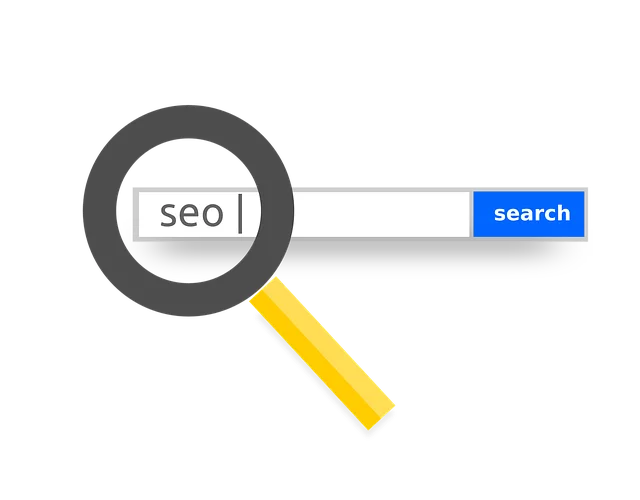Understanding user intent is crucial for SEO Content Optimization, focusing on interpreting search queries' hidden motivations and information needs. By aligning content with these intents, websites provide relevant answers, enhance user satisfaction, and improve search engine rankings. Key steps include keyword research, crafting tailored content, optimizing meta elements, and adapting to voice search trends. In a digital era with shorter attention spans, enhancing readability and engagement is vital. User feedback and analytics are essential for continuous improvement. Optimizing for user intent boosts organic traffic, engagement, and customer loyalty, demonstrating its success through real-world examples like significant sales increases. Effective SEO Content Optimization combines keyword research and high-quality content creation.
User Intent Optimization Training is a transformative approach to enhancing online visibility and user engagement through SEO Content Optimization. This comprehensive guide delves into the core concepts, from deciphering user intent to leveraging analytics for continuous improvement. We explore effective strategies like uncovering hidden keywords, crafting aligned content, optimizing on-page elements, and adapting to voice search trends. Through case studies and best practices, learn how to create accessible, engaging content that drives results in today’s competitive digital landscape.
Understanding User Intent: The Foundation of SEO Content Optimization

Understanding user intent is a cornerstone in the field of SEO Content Optimization. It involves deciphering what a search query truly represents—the hidden motivations, information needs, and desired outcomes behind each keyword. By aligning content with these user intents, websites can provide more relevant answers to queries, thereby enhancing user satisfaction and driving higher search engine rankings.
This process requires a deep dive into the mindset of target audiences. Content creators must ask themselves: What are users trying to accomplish? Are they looking for informative answers, seeking to make a purchase, or browsing for entertainment? Crafting content that addresses these intents not only satisfies users but also signals to search engines the value and relevance of the site, leading to better SEO performance.
Uncovering Keywords and Searcher Intents: A Closer Look

Uncovering keywords and understanding searcher intents are pivotal aspects of effective SEO content optimization. By delving into the specific terms and phrases users type into search engines, we gain valuable insights into their information needs and underlying motivations. This process involves meticulous keyword research, where tools and analytics platforms play a crucial role in identifying popular search queries, long-tail keywords, and emerging trends within a particular niche or industry.
Through this analysis, content creators can tailor their writing to align with user intents—whether it’s answering questions, providing how-to guides, comparing products, or offering expert insights. Optimizing content for both relevant keywords and user expectations ensures that search engines not only understand the topic but also recognize its value and relevance to the target audience.
Crafting Content That Aligns with User Expectations

Creating content that aligns perfectly with user expectations is a cornerstone of successful SEO content optimization. It involves understanding not just what keywords users search for, but also their intent behind those searches. For instance, if someone types “best coffee shops near me,” they’re seeking local recommendations, not detailed analyses of coffee brewing techniques. Optimizing your content to directly address this user intent increases the likelihood of ranking higher and attracting the right audience.
This means crafting compelling meta titles, descriptions, and headings that accurately reflect the topic while incorporating relevant keywords naturally. The content itself should provide concise, valuable answers to user queries, whether it’s a how-to guide, listicle, or in-depth analysis. By aligning your content with user expectations, you not only enhance the user experience but also signal to search engines that your site is a trusted source for that particular information.
On-Page Optimization Techniques for Better User Experience

On-Page optimization is a crucial aspect of User Intent Optimization Training, as it directly impacts the user experience and search engine rankings. Techniques such as keyword research and strategic placement ensure that content is both relevant and visible to users. By optimizing meta titles, descriptions, headers, and alt tags, we enhance accessibility and click-through rates, making websites more engaging and SEO-friendly.
Effective on-page optimization also involves creating high-quality, unique content tailored to user queries. This includes using heading structures, internal linking, and multimedia elements to break down complex information into digestible chunks. Such practices not only improve user satisfaction but also help search engines understand the context and intent behind each page, leading to better indexing and higher search rankings.
Optimizing for Voice Search: Adapting to New Trends

With the rapid rise of voice assistants like Siri, Alexa, and Google Assistant, optimizing for voice search has become a critical aspect of modern SEO Content Optimization. Unlike text searches where users type keywords, voice searches are often more conversational and natural language-based. This shift demands that content creators adapt their strategies to cater to this new trend.
To excel in voice search optimization, focus on creating content that encourages dialogue and answers questions directly. Incorporate long-tail keywords relevant to your audience’s queries, as voice assistants tend to favor these more specific terms. Additionally, ensure your content is structured for easy navigation, with clear headings and concise paragraphs, making it suitable for the fast-paced and often hands-free nature of voice search interactions.
Enhancing Readability and Engagement: Making Your Content More Accessible

In today’s digital landscape, where attention spans are shorter than ever, enhancing readability and engagement is crucial for effective SEO content optimization. Making your content more accessible starts with clear and concise language that speaks directly to your audience’s needs and interests. Breaking up text with headings, bullet points, and short paragraphs not only improves visual appeal but also helps search engines understand the hierarchical structure of your content, making it easier to index and rank.
Additionally, incorporating active voice, simple sentence structures, and relevant visuals can significantly boost readability. Engaging content that resonates with readers is more likely to be shared, linked to, and spent significant time on, all factors that positively influence SEO. This means tailoring your writing style to be conversational yet informative, ensuring every word contributes to the overall message and value you’re providing to your audience.
Leveraging User Feedback and Analytics for Continuous Improvement

User feedback and analytics are indispensable tools for continuously refining SEO content optimization strategies. By actively gathering and analyzing user interactions, businesses can gain valuable insights into what resonates with their target audience. This data-driven approach allows for a deep understanding of user preferences, pain points, and search behavior, enabling content creators to make informed decisions.
Leveraging these feedback loops ensures that the content remains relevant, engaging, and aligned with search engine algorithms. Regularly reviewing analytics can highlight high-performing content, as well as areas where improvements are needed. This iterative process fosters a culture of continuous improvement, ultimately enhancing user experience and driving better SEO outcomes.
Case Studies: Success Stories in User Intent Optimization

In the dynamic landscape of digital marketing, success stories in User Intent Optimization serve as powerful case studies for other businesses to learn from and emulate. These real-world examples highlight how companies have effectively utilized SEO Content Optimization techniques to align their online content with user search intent, resulting in increased organic traffic, improved user engagement, and enhanced conversion rates.
One notable example involves an e-commerce retailer who, through meticulous keyword research and on-page optimization, saw a 30% increase in product sales within six months. By understanding user queries and creating content that directly addressed their needs, the retailer not only outranked competitors but also built a loyal customer base. This success story underscores the importance of prioritizing user intent in SEO Content Optimization strategies to achieve sustainable growth in an increasingly competitive digital marketplace.
Best Practices for Implementing SEO Content Optimization Strategies

Implementing effective SEO content optimization strategies requires a thoughtful approach and adherence to best practices. Firstly, conduct thorough keyword research to identify terms relevant to your target audience. Incorporate these keywords naturally into your content, ensuring optimal density for better search engine rankings. Secondly, create high-quality, engaging content that provides genuine value to readers; this not only satisfies user intent but also encourages longer dwell times and lower bounce rates.
Additionally, focus on optimizing meta tags, including titles and descriptions, as they significantly impact click-through rates. Optimize images by including alt text and ensuring file sizes are compressed for faster loading times. Regularly update your content to keep it fresh and relevant, as search engines favor dynamic, up-to-date websites. Lastly, monitor analytics to track performance and adjust strategies accordingly, continually refining your SEO content optimization approach.
